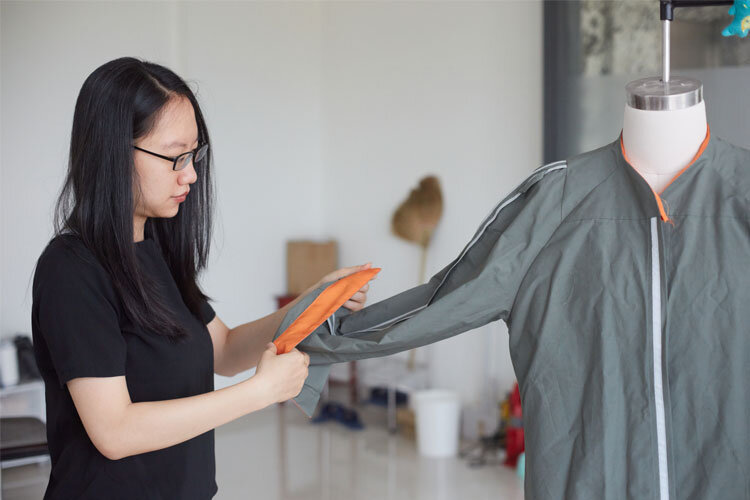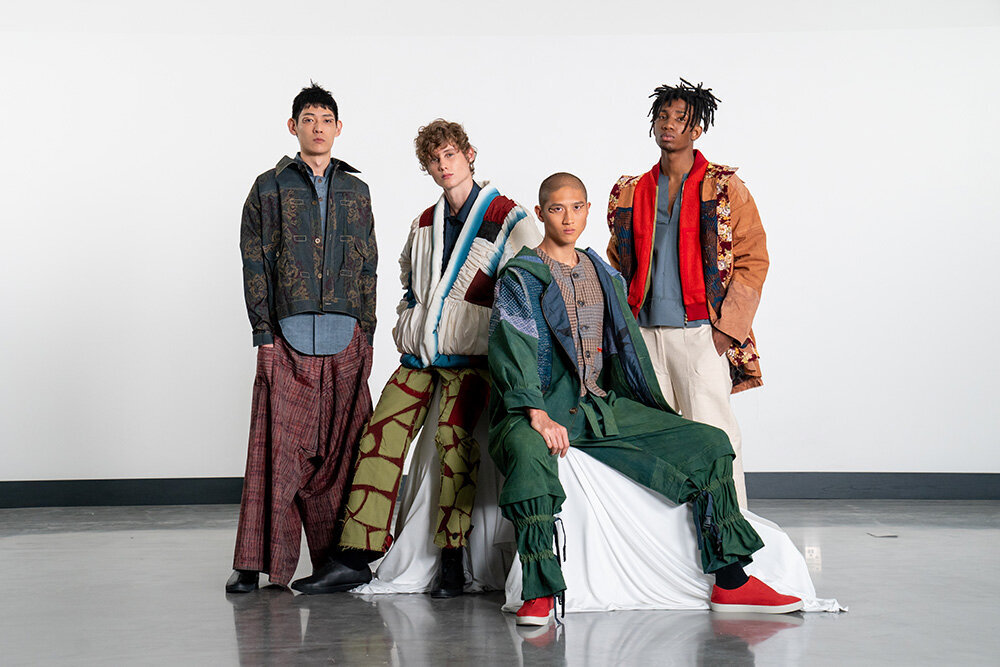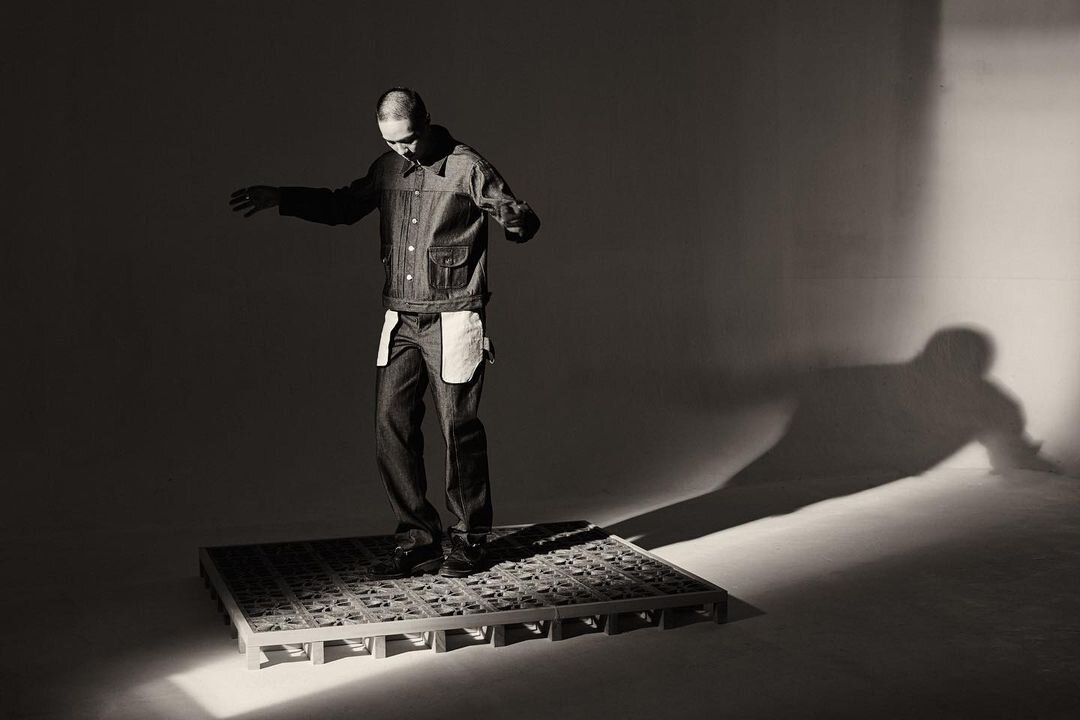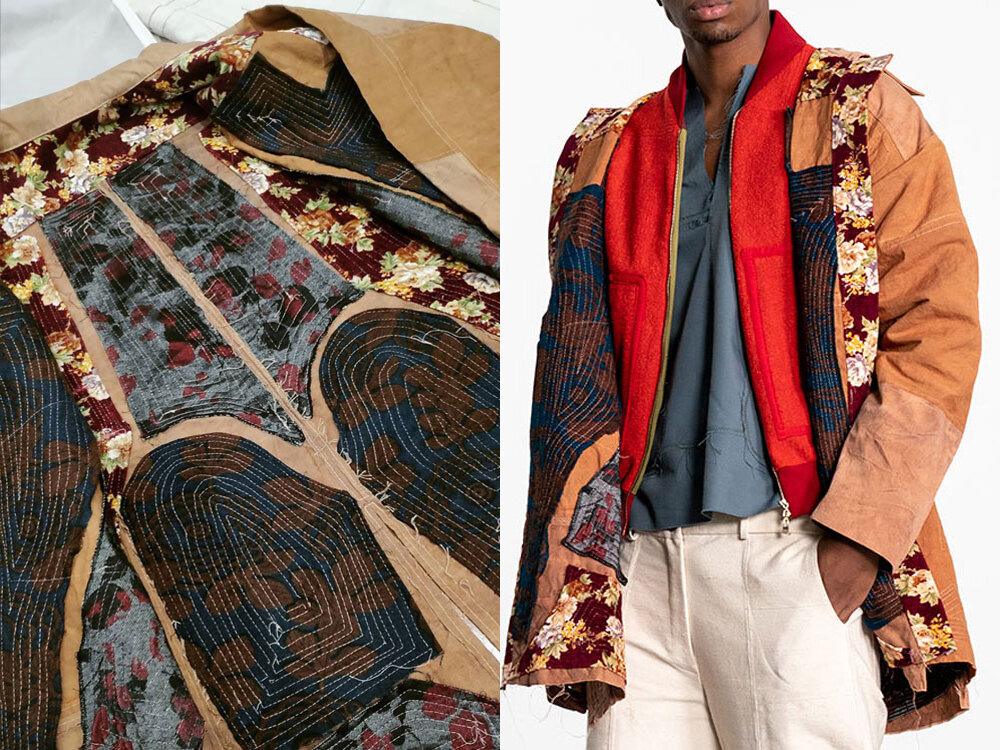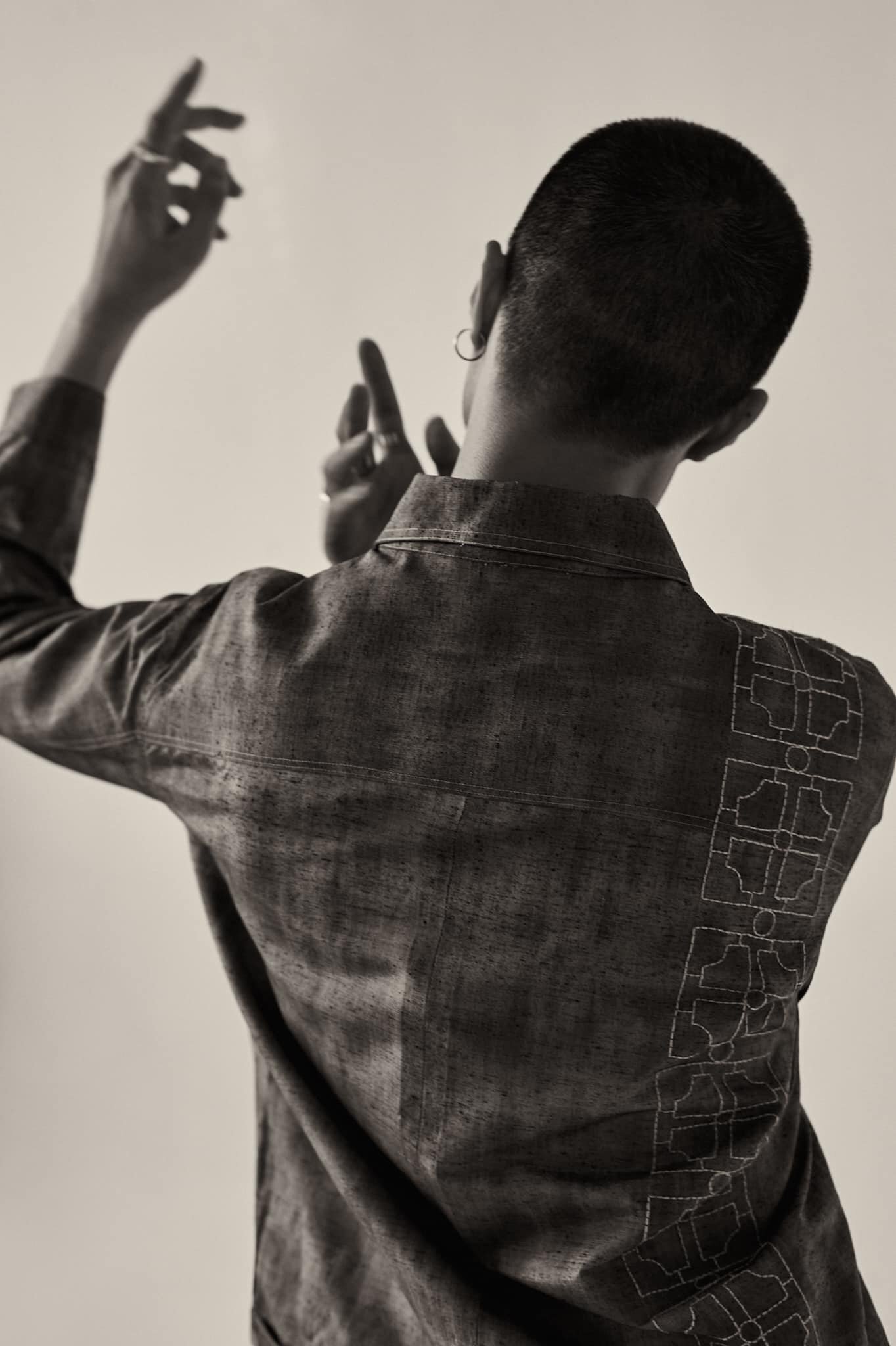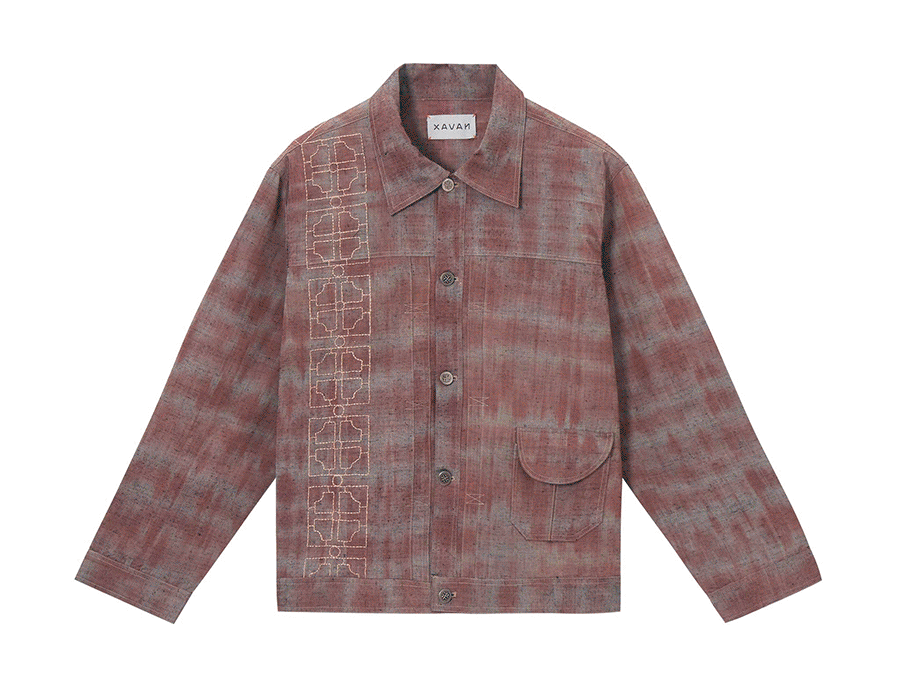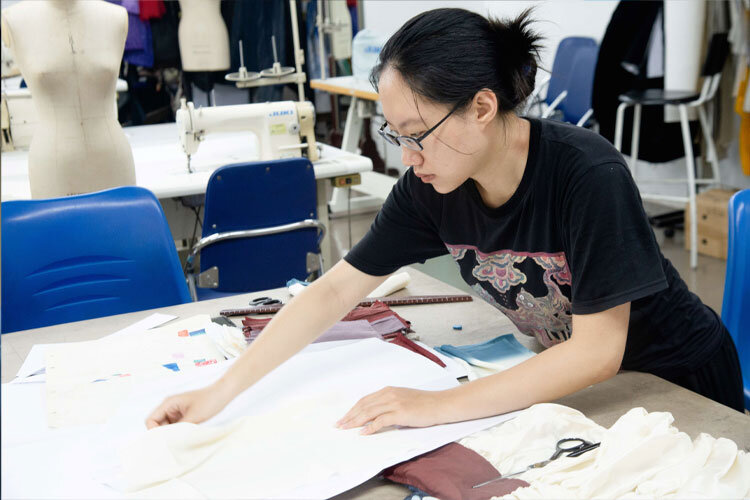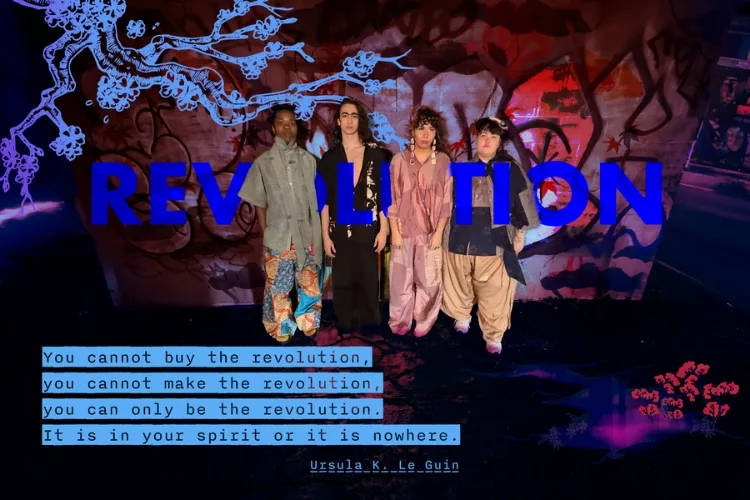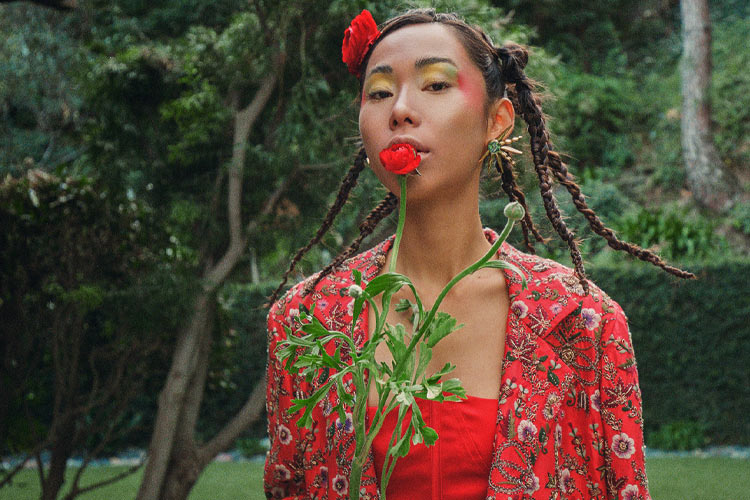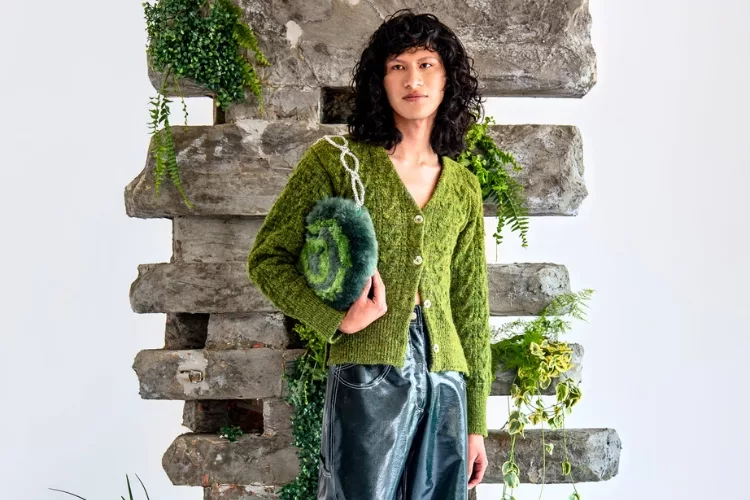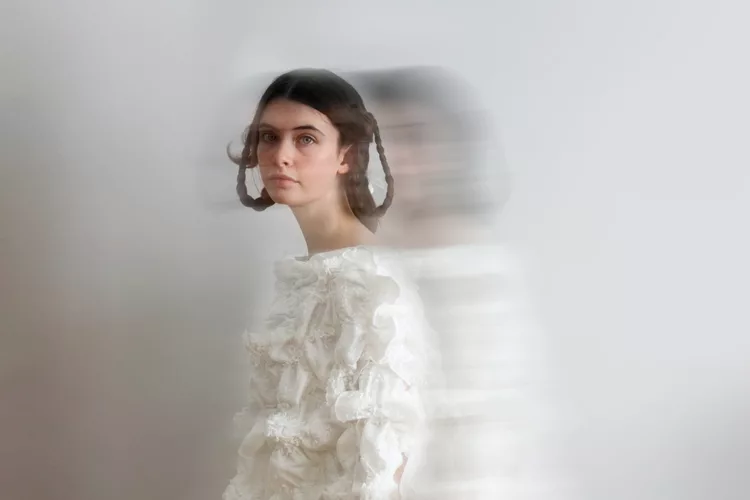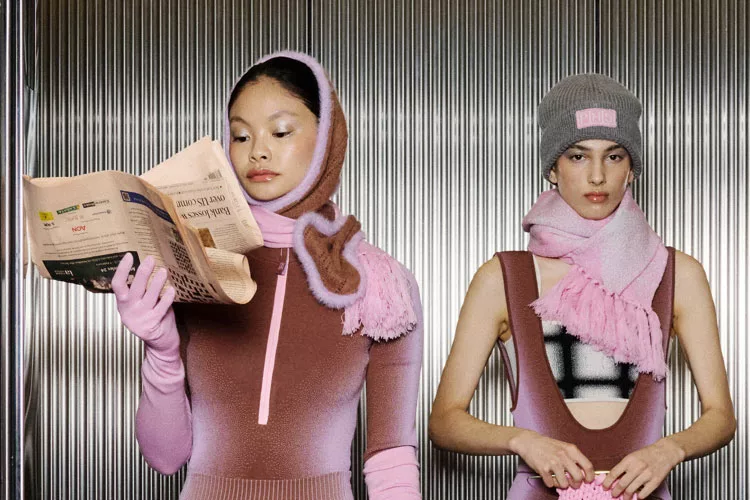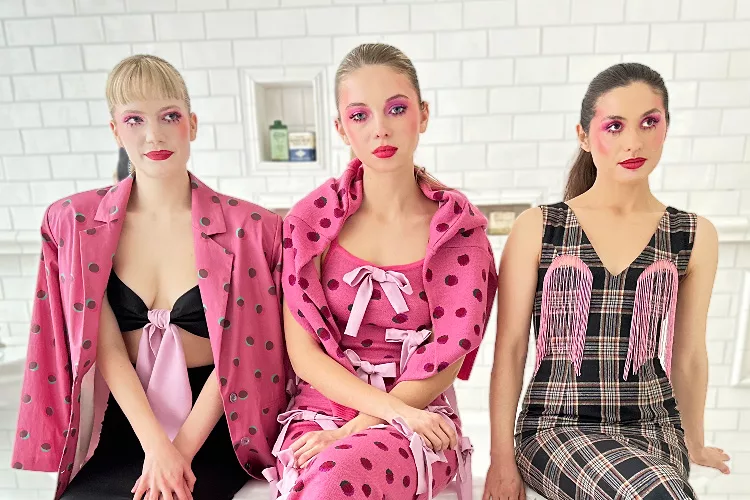Le Ngoc Ha Thu
The reason why I embrace that label (“sustainable designer”) is because that’s my career motto. That’s a promise I’ve made to myself and it’s also a signal. When I put it out there, only people who care about the environment as much as I do will reach out to me. Expectation’s set.
Tired of seeing big companies not fulfilling their corporate social responsibility despite endless campaigns and callouts? Head towards global competitions incubating the talents in sustainable fashion, the designers who design with the least carbon footprint but leave the most imprint for the future of fashion.
We’re big fans of the Redress Design Award. With its first cycle dated back to 2011, the Redress Design Award is the world’s largest sustainable fashion design competition. Its mission is to educate emerging fashion designers around the world about sustainable design theories and techniques in order to drive growth towards a circular fashion system. Each competition cycle takes participants on an educational journey lasting several theory and design-packed months.
With the application round opened in May, the 2021 Award has now revealed its Finalists, and we are eagerly waiting for their Fashion Shoot, which takes place in August. While we wait to see who is the winner this year, let us look back at one of last year’s winners, Le Ngoc Ha Thu.
NKM/Jacqueline: Can you tell us a little bit about yourself?
Thu: I am a fashion designer with a focus on research. I graduated from London College for Design & Fashion in Hanoi 3 years ago.
I’ve always considered research to be one of the most fundamental parts of creating and designing, so I want to learn more and dig deeper. That means probably taking an MFA since I focus on sustainability – a very broad topic that’s constantly evolving, – so continuous learning is essential. And to fully understand sustainability, you have to be knowledgeable in fields other than design, such as ecology as a whole, and business management.
People tend to applaud only the creative part of the entire designing process without putting enough emphasis on the prior research and theories, etc. They are actually the foundation of the whole design. I think I’m a good researcher-designer.
What kind of Master’s Degree are you going to get?
I’m not sure yet, there are a lot of studies that I can choose from. But it’ll likely have something to do with new technologies in material design, because that’s the field of study I want to go further into. But yeah, we’ll see if the opportunities will open up or not.
By new technologies do you mean textile innovations?Studying the material is only one part of the design. However, since I have a brand, I need to understand the supply chain, the fashion industry as a whole and other related industries.
And even within the scope of designing, aside from textile choices there are also other methods of making things that are better for the environment: new machinery, new technologies in putting together a garment. Right now I’m trying zero-waste in pattern cutting – basically you use up the whole sheet of fabric to create new garments.
Thu’s winning collection
You were the winner of the Menswear category at the Redress Design Award 2020. That’s really inspiring, especially for a Vietnamese designer. Can you share with us your experience at the competition?
It was really special. They’d been hosting the competition for 9 years, and that was the first fully virtual one because of the Covid 19 pandemic. We never met up, even though we were supposed to gather in Hong Kong. But then that also didn’t happen because of the political disruption, you know the Yellow Umbrella movement in Hong Kong? So everything was online – the training, the bonding.
We had virtual lectures 3 to 4 weeks before the final night, where we met with experts and specialists from different fields. We were talking future trend analysis. We also went on a virtual tour inside a denim manufacturer in Hong Kong which was famous for their sustainability standards. We had discussions, exercises, mini challenges provided by the sponsors.
For example, we had to learn this new skillset, which was designing in a 3-D environment, like, creating from simulation. You’d have to create a form first. Remember the mock-ups from video games? It was almost like that, like animation, you can see them spinning around in this 3-D environment. So we had to create a design using 3-D software for the clients, one of which was Timberland.
I really appreciate the experience, especially the educational activities like that.
A lot of other contestants designed womenswear, why did you choose menswear? And now, your brand, XAVAN, also is a menswear clothing line. Is it a specialized field of yours?
I think yes. When I was doing my graduation collection, I started researching menswear because the collection was for both men and women. So when I started the Redress Design competition I wanted to challenge myself. I wanted to resolve this misconception in the fashion industry that women are the main customers, and men don’t really care about fashion – but that’s actually not true, right?
Research has shown that menswear is growing faster and it is going to contribute more to the fashion market value, especially considering its growth in the last 3 years. Yet a lot of fashion students seem to ignore what the male customer really wants. And that’s kinda funny because when I design for a female client, I instinctively, as a woman, am able to predict what she wants, but that’s not the case for my male clients. That’s much harder. You really have to dig in. And it is also during that process that your preconceptions start to fall apart and you realize what you thought was true about menswear is actually not, and the clients have really special needs you can’t even imagine.
Image from Xavan Studio
One of the biggest differences from womenswear, which is also something I’m really interested in, is functionality. For example, if there is a pocket on the garment, it has to be a functional pocket. Whereas in many women’s skirts and dresses there are no pockets. It boils down to the responsibility of the designer and that preconception is just sexist. Especially now when we are breaking down barriers and have a whole spectrum of gender identities other than just men and women, designers have to take into consideration the wants and needs of the two ends of the spectrum and everything in between.
Can you share with us your first job out of college and how you landed that position?
[laugh] Actually my first job out of college was “within” the college. After graduating I started translating documents and I became a teaching assistant for my college.
Did that job help you expand your network in the fashion industry?
It depends. I don’t actively seek out new connections. I’m quite passive. When you think of expanding your network in the industry it almost means reaching out to important names; however, I value my closer connections in the college.
So, back to my first job, I was the teaching assistant for the Fashion department for a year. In that whole year I got to meet many new students – the young blood. We developed a mutual relationship – I got inspired by them and I also helped them with their designs. We have this kind of chemistry where the idea goes back and forth. And I think those are some of the most treasurable connections that I was able to expand in the last few years. I now have some really good designer friends from that period, who are going to be the future of the designing industry.
“ I can see them as my comrades, almost. Not just friends or colleagues or someone to work with. We share the same ideals about sustainability, gender equality, and loads of social issues that we, this younger generation, care about. I’m really happy to get to know them from such an early stage in their career and to grow together.”
I’m really curious about how you label yourself as a “sustainable fashion designer”. Usually people see sustainability as something marketed by the retailers, not the designers. Because, you know, designers tend to have to follow what clients tell them to do. How would you define that title of yours? Have you ever declined an offer/order that is unethical?
That’s actually a very good question. The reason behind that label is because that’s my career motto. That’s a promise I’ve made to myself and it’s also a signal. When I put it out there, only people who care about the environment as much as I do will reach out to me. Expectation’s set.
About rejecting orders: when I was first starting out, I couldn’t consider myself as a sustainable fashion designer yet. As a fresh graduate I had to take on jobs regardless as to whether the jobs were right. For instance, I used to work on short-term projects, designing for local brands and companies whose production cycle was really, really fast – typically what you’d consider fast fashion.
They really squeezed me out and even forced me to copy stuff. There was no space for fully developed ideas, only deadlines and KPI: turn in 10 or 15 designs at the end of each week.
Or even when I was given time and space for my creativity there was always something I was unsatisfied with about the project. Even when I received a sort of eco-friendly collection order, the client didn’t understand the proper way to do sustainable fashion.
After about a year and a half or so, I really got fed up with receiving freelance contracts like that. So I decided to open my own brand. I really want to try and test if the theories I learned and what I believe in can be applied to real life situations.
How do you describe your aesthetics? Your rich research base must have some influence over how you design things.
Eclectic. I try to combine the best from different things – different types of clothing like workwear, streetwear etc., and to take inspirations from different periods of fashion history. Same ingredients, new recipe. Everything is already there, nothing’s new, but I change the ratio. For example, in formal wear, you can merge the characteristics of a blue collar worker’s clothing with that of a white collar worker and see what happens.
So that’s why researching is important. You really have to understand your ingredients. You have to capture the essence of things and their cultural aspects, as well as to know what can be taken out of context for merging purposes and what cannot.
I read that you used old kimono fabrics for your collection at the Redress Design Award. That’s really interesting. How did you source the fabric? And what is your design process like?
The practice of using secondhand kimonos is actually not a new thing in Japan. There were, 2 or 3 other contestants who also used the same fabric source. The girl who was based in Japan is now even running a business on kimono recycling.
Interior detail and exterior of one of Thu’s designs for the Redress Design Competition
At the competition, I was lucky enough to find out about this retailer based in Osaka who has an online website for selling old kimonos overseas. It cost a little more but was a lot easier than flying to Japan to get kimonos myself.
When my order arrived, I had to unpick all of them – a slow and painstaking process but if you think about it, it’s actually nothing compared to the work of making the original kimono. Because everything was made by hand. All of the seams were hand-sewn. And you were basically destroying a really precious creation.
But while dissecting the kimonos I understood the philosophy of making the garment. Remember how we talked about zero-waste earlier? At the time those kimonos were made, fabrics used to be precious. In the past, we didn’t know how to mass produce textiles. So people tried to use up every inch of the fabric and it really showed in how the kimonos were constructed. Every kimono was pieces of rectangular fabrics sewn together, and even when making a curved hem, the Japanese didn’t cut excess fabric out – they just folded it in, secured the fold, and kept on sewing. So they kept extra fabrics inside the garment instead of throwing them away.
It’s almost like a lesson. When taking apart a kimono, you understand the garment better and the philosophy behind it.
XAVAN Jacket Detail
I saw a lot of cultural notes from Vietnam in your Xavan collection and there’s already a mini film about it on Facebook. Can you share with us how you made the film?
When I first started out doing Xavan, I didn’t intend it to be a very Vietnamese brand. I aim for Xavan to be an international brand. But one way or another, you have to create your brand’s identity, and you cannot have brand identity without your nationality, your birthplace. So while I don’t intend for Xavan to be a local Vietnamese brand, the Vietnamese cultures just naturally resurfaced. It’s also a tribute to my roots.
The fashion film is an animation. It was a really long process. We started talking about making the film in around September last year and we’ve only just completed it in May. It took 8-9 months to create that 45 seconds.
The main reason is because Xavan is a 3-person team, and only 1 person was responsible for the visuals and the animation. AND the animator is still a college student in Japan, so he only does animation in his free time. So it took a lot of time for the project to be done.
But nothing was in a rush or anything. We take things slow here. I’m also a person who needs time. We built the script at first, and tested out each scene. The storyline came naturally among us, a natural recollection of our shared childhood.
Can you tell us about your future plan/what you’re working on right now?
Right now we are preparing for our Winter 2021 collection. We have finished the designing and prototyping, the line-up and are going into the production phase. I’m crossing my fingers that in July the Covid pandemic will subside and we’ll be able to do the photoshoot.
Do you have a physical store or is it direct-to-consumer?
I’m looking at concept stores to put my designs in. There has to be a place for our customers to try on our designs.
“This is a standard/quality benchmark for all Xavan’s products: if it looks beautiful in the image, it has to be 3 times more beautiful in person: the fit, the materials, the finishing – everything. When you try it on, it makes you feel good. That’s why we need a physical touchpoint. ”
For our next collection we are also looking forward to collaborating with Vietnamese artists. And material-wise we will also be exploring other types than fabrics, like recycled plastic.
So yeah, the most concrete future plan is Xavan’s next collection. I really hope we’ll have enough money.
Do you have any partners who help you with the financing?
Yes, we have 3 founders and each of us put in an equal amount of money. I am in charge of the designing and production process, another one is in charge of branding and the visuals, and the remaining one handles sales, retail work and customer relationship.
Do you have any advice for young designers who also care about sustainability but start out in a market where awareness about sustainability in fashion is lower?
Actually, from my experience, it’s a big advantage coming from an outsourcing country. For one, your country has a lot of skilled workers, and a lot of factories from big brands. For example, we can place an order for authentic YKK zippers here at a much lower price compared to, say, Europe or something.
Also, in developing countries, the environment is really open. You have a lot of chances: it’s easy to open a business, and to close it if it doesn’t work. Whereas in developed countries, it’s much harder to break into the industry because the market is so saturated.
Right now in Vietnam there’s this kind of bubbling economy where you can start a brand, run it for 3 months and then close it and people are okay with that. So it’s advantageous for the business owner.
Especially when it comes to sustainability. More and more are talking about sustainability. And since it’s still growing in Vietnam, you can actually have a considerable amount of influence over that growth. Even though it seems like a familiar topic within your circle, there are still many people unaware of it and that is where you can have an influence over them. And since I started out earlier than my peers in Vietnam, I have an edge over them and have more connections.
So you needn’t worry about doing sustainability in a developing country. People are getting richer and more knowledgeable about the topic. Millenials and Gen Z are going to support your business in the future.
Thank you for the super informational interview, Thu! Especially the insights about the young market in budding fashion economies like Vietnam!
Thanks for having me. If you need anything else you can find me on my Facebook, Thu Ngoc Ha Le or send me a direct message on my Ig account @le_ngochathu
A list of Thu’s favorite designer:
-
International (past to present): Rei Kawakubo (for Comme des Garçons), Yohji Yamamoto, Issey Miyake, Craig Green
-
In Vietnam: Nguyen Hoang Tu, Thao Nguyen (kilomet109)
–Jacqueline Pham


